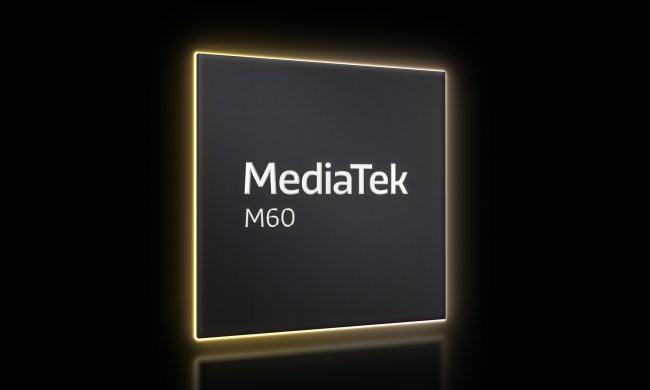Although 2022 will likely be heralded as the year 5G truly went mainstream, we’ve traveled a long and winding road to get here. Carriers began actively working on preparing this leading-edge cellular tech as early as 2015, but it wasn’t until the end of 2018 that the first 5G mobile towers came online. It also took until 2020 before 5G was much more than a curiosity for early adopters.
Although previous cellular technologies like 4G/LTE also spent a long time in the research and development stages, those didn’t experience nearly the same growing pains that 5G has. When 4G/LTE services began rolling out broadly in 2011, it was the same basic technology across all the major U.S. carriers.
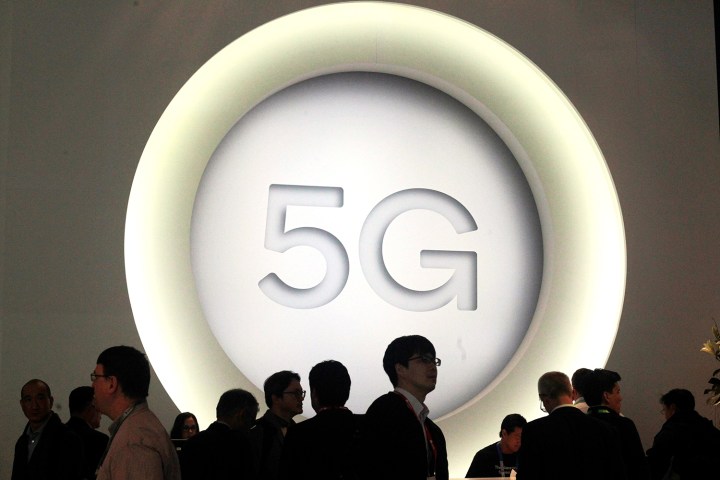
Things have been considerably more complicated with 5G. Since the newer technology promises the kind of performance previously exclusive to wired broadband services, it comes with more demanding requirements and runs over a much wider range of frequencies.
This has made deploying 5G somewhat more challenging as carriers try to find more radio spectrum to carry the best 5G signals. They also need to keep their 4G/LTE networks running at peak performance while sharing the airwaves with new 5G services.
The humble beginnings of 5G
Many folks don’t know that the first 5G deployments in the United States weren’t for mobile devices at all. In 2017, the carriers began trialing fixed wireless 5G services as a replacement for wired broadband home internet. Closed trials of 5G home internet ran well into 2018 before becoming commercially available later that same year.
It wasn’t until early 2019 that the first 5G mobile networks rolled out. Verizon led the way in April with a relatively small 5G footprint in core areas of Chicago and Minneapolis, arguably beating out three South Korean carriers to become the first commercial 5G smartphone service on the planet.

Verizon expanded its service to several other cities throughout 2019, including Denver, Providence, St. Paul, Atlanta, Detroit, Indianapolis, Washington, D.C., Phoenix, Panama City, New York City, Dallas, Omaha, Houston, and Boston.
The carrier had all these cities under its belt before rivals T-Mobile and AT&T turned the switch on their own 5G networks, but there was a big catch. As a result of Verizon’s use of the extremely high frequency (EHF) — and extremely short range — millimeter wave (mmWave) spectrum, 5G service in each of these cities was confined to very small and specific areas. Stray more than a block away from a 5G zone, and you would quickly find yourself back on the carrier’s standard 4G/LTE service.
The upside is that if you were near one of these rare mmWave 5G towers, you could experience phenomenal speeds. It wasn’t uncommon to see speeds in the 500 to 1,000Mbps (1Gbps) range.
Sprint had also begun dipping its toes into 5G in early 2019, using the mid-band 2.5GHz spectrum that was already carrying its 4G/LTE traffic. Those deployments were relatively short-lived, though, as a year later, it would find itself folded into the new T-Mobile, which had other plans for that spectrum.
Expanding 5G across the nation
While Verizon focused on delivering the fastest possible 5G speeds to tiny areas, AT&T and T-Mobile were working instead on building more expansive 5G networks using low-band frequencies that could travel much greater distances.
Both carriers turned on their larger 5G networks in December 2019, with T-Mobile claiming its network covered 200 million people out of the gate, while AT&T only promised coverage for “tens of millions” of its customers. This isn’t to be confused with AT&T’s 5G Evolution (5GE) network, which launched in 2018 but was really just a misleading name for its advanced 4G/LTE services.
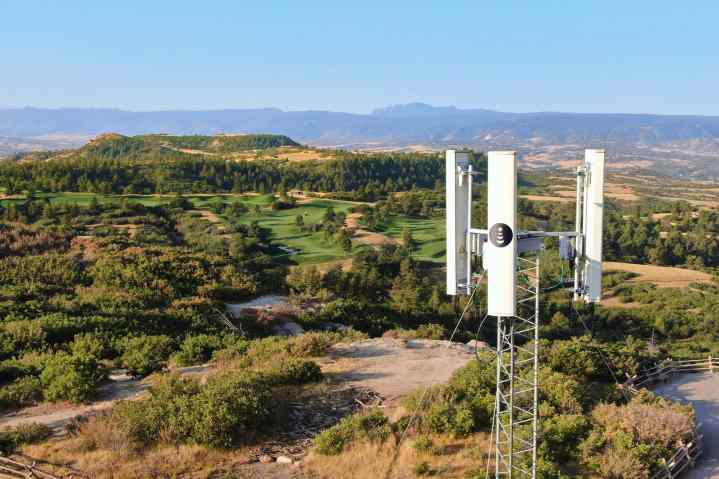
The two carriers used different pieces of the low-band spectrum, with AT&T using higher frequency signals that were paired with its 4G/LTE network in key cities — only about 15 during its initial launch — while T-Mobile piggybacked on its 600MHz spectrum that was already covering vast swaths of the countryside. By mid-2020, T-Mobile was able to leverage that spectrum to boast 5G coverage in all 50 states, including Alaska.
Verizon didn’t join the nationwide 5G party until late 2020 when it rebranded its mmWave 5G service as its 5G Ultra Wideband (5G UW) network. It did this to make room for a new 5G Nationwide offering that it said would deliver 5G to 200 million more people throughout 1,800 towns and cities across the nation.
The first 5G smartphones
The earliest 5G deployments were exciting but a bit premature — especially Verizon’s. When the first mmWave cells went live in Chicago, there were barely any handsets that supported 5G at all — much less the mmWave flavor of 5G that Verizon used.
In fact, the only compatible handset on the market at the time of that initial 5G launch was Motorola’s midrange Moto Z3, which was sold exclusively on the Verizon network. It also required a separate Moto Mod add-on module to provide 5G compatibility.
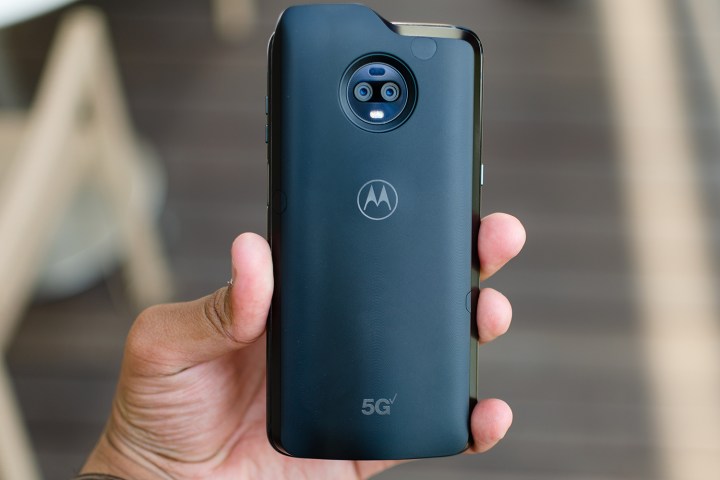
The Moto Z3/Moto Mod solution was a strange arrangement, but fortunately, 5G enthusiasts didn’t have to wait long for more options. Samsung’s Galaxy S10 5G and LG’s V50 ThinQ came along in May, followed by the Huawei Mate X, OnePlus Pro 7 5G, Xiaomi Mi Mix 3 5G, and ZTE Axon 10 Pro 5G.
Those early 5G smartphones also had another critical catch. In 2019, Verizon and Sprint were offering 5G services but doing so on different frequencies. Early 5G smartphones like LG’s V50 ThinQ and the OnePlus Pro 7 5G couldn’t pack in all the necessary frequencies for both carriers, so they were sold in two different versions on each carrier. This meant many early Verizon 5G phones wouldn’t work on Sprint and vice-versa.

Meanwhile, Apple released its iPhone 11 lineup in 2019 with no 5G support at all. The message from Cupertino was clear: 5G wasn’t a big enough deal yet to warrant its inclusion in Apple’s flagship smartphone lineup.
That’s a fair assessment since Apple builds its products for the masses, and 5G was available to less than 5% of U.S. consumers in September 2019. That had changed significantly by the time the iPhone 12 was released a year later, and 5G has been standard on every iPhone since with support for every 5G band from T-Mobile’s 600MHz low-band to AT&T’s 39GHz mmWave in every U.S. model save the lower-cost iPhone SE.
T-Mobile takes the lead
By November 2019, Verizon had 5G coverage in small areas of 16 U.S. cities, and Sprint claimed around 16 million people under its 5G umbrella.
So it’s easy to appreciate how big of a deal it was when T-Mobile flipped the switch on its nationwide 5G network on December 2, promising 5G service to 200 million people in more than 5,000 cities and towns across the U.S. In one fell swoop, the carrier had just increased 5G availability tenfold.
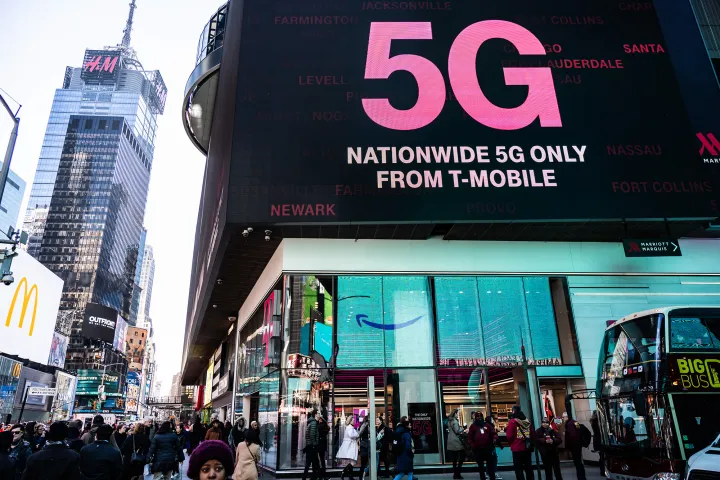
While Verizon still offered significantly faster speeds, that didn’t matter to 99% of its customers since they were stuck on the carrier’s 4G network. In those early days, T-Mobile’s initial 5G network wasn’t much faster than its 4G/LTE network, but it also wasted no time making dramatic improvements.
First off, T-Mobile worked to build a “standalone” 5G network — one that wouldn’t rely on sharing the airwaves with older 4G/LTE traffic. This allowed it to make the most of its low-band 600MHz 5G spectrum by dedicating towers to carrying only 5G traffic.
In April 2020, T-Mobile also completed its merger with Sprint and quickly began decommissioning the other carrier’s 2.5GHz towers to make room for what would become its 5G Ultra Capacity (5G UC) network. This mid-band 5G spectrum sits in the sweet spot, offering the best combination of range and speed, and by the end of 2021, T-Mobile had extended this coverage to over 200 million people across the country.
Carving up the airwaves
While T-Mobile was busy at work building out its midrange 2.5GHz network, its rivals were left at a disadvantage. Neither AT&T nor Verizon had any mid-band spectrum available to them at that time, so they were forced to stay on the low-end.
AT&T continued slowly rolling out its low-band 5G network while deploying a faster 5G Plus (5G+) mmWave network in dense urban areas. While Verizon had started from the opposite end with its 2019 mmWave deployments, in late 2020, it switched on its low-band 5G Nationwide network to bring 5G to the majority of its customers.
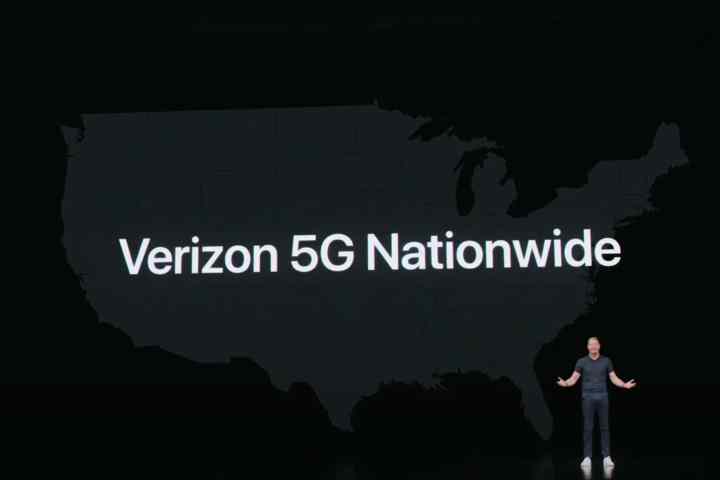
Unfortunately, since these extended 5G networks relied on the same frequencies used by the carriers’ 4G/LTE services, customers got little more than the privilege of seeing a 5G symbol appear on their smartphones. Actual download speeds were rarely any better than 4G/LTE and, in some cases, were slower, as 4G/LTE traffic always had priority on those airwaves.
C-band changes the game
T-Mobile’s 2.5GHz spectrum gave it a massive head start on deploying a faster 5G network, but the other carriers weren’t about to be left behind. In early 2021, the Federal Communications Commission (FCC) put a chunk of C-band spectrum up for auction in the 3.7–3.98GHz range.
Verizon was quick to gobble up as much of that as it could, paying a record $45 .4 billion in the auction. AT&T spent $23 billion to secure its piece, and T-Mobile dropped $9.3 billion for a smaller portion that would be used to augment its existing 2.5GHz Ultra Capacity network.
However, this new spectrum was much more valuable to Verizon and AT&T since it finally let them play in the mid-band club. Better yet, these higher frequencies potentially offer even greater capacity than T-Mobile’s 2.5GHz spectrum, albeit at slightly shorter ranges.

Following a heated controversy with the Federal Aviation Administration (FAA) and the airline industry over whether these signals would interfere with aircraft instruments, AT&T and Verizon finally got the green light to switch on their C-band spectrum in January 2022.
Customers saw marked performance improvements right out of the gate. This was especially true for those on Verizon since the carrier immediately rolled out the new C-band spectrum to 100 million people in 1,700 cities. By comparison, AT&T limited its initial C-band rollouts to only eight urban centers, preferring to defer a wider C-band rollout until later this year when it can take advantage of some less controversial 3.45–3.55GHz C-band spectrum it acquired in a later auction.
The 5G landscape today
While T-Mobile still holds a commanding lead, this is due mainly to the big head start it had in rolling out its midrange coverage in the first place. A study comparing 5G enhanced services on equal footing shows that T-Mobile and Verizon customers get roughly the same performance when using their carriers’ best 5G networks — the mid-band ones.
However, the much broader coverage of T-Mobile’s 5G Ultra Capacity network means more customers will experience its fastest download speeds, pushing up the nationwide median compared to Verizon. It’s fair to say these numbers will get more balanced as Verizon expands its 5G Ultra Wideband coverage to more cities.
Similarly, AT&T remains in last place as it’s taking a much more measured approach to its 5G rollouts, but that will also change once it starts switching on more 5G Plus sites later this year, and it should be more of a contender by 2023.
The good news is that this year we’ve moved past most of the challenges from the early days of 5G. Today, all three nationwide carriers have mature 5G networks that leverage all three frequency ranges — low-band in rural areas, mid-band in most cities, and mmWave in dense urban locations — to provide the best possible 5G service. The question is no longer about whether a given carrier provides better 5G service than its rivals — T-Mobile’s 5G UC, Verizon’s 5G UW, or AT&T’s 5G+ are all neck-in-neck for performance — but simply if those fastest 5G networks are available where you live and work.


